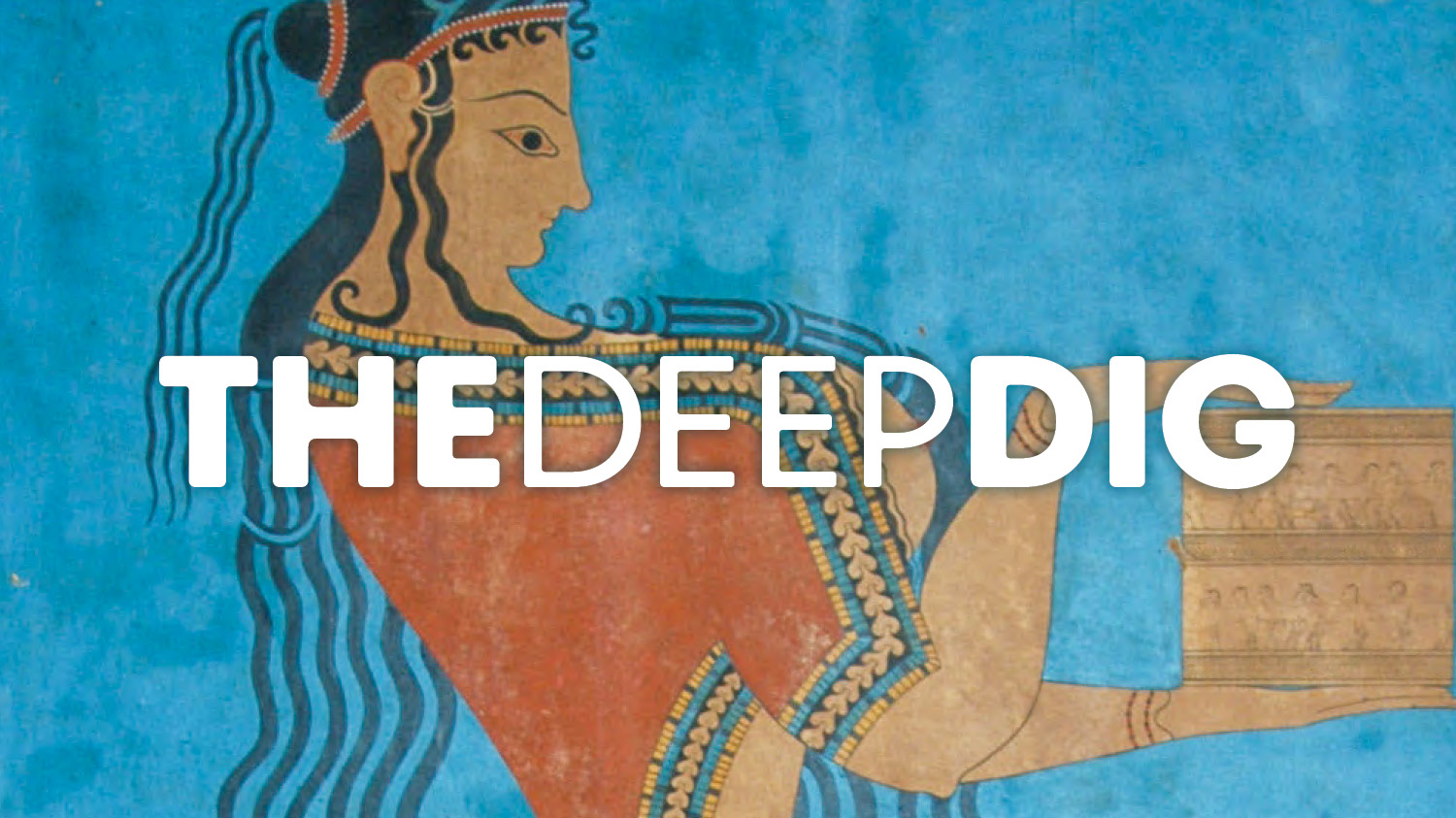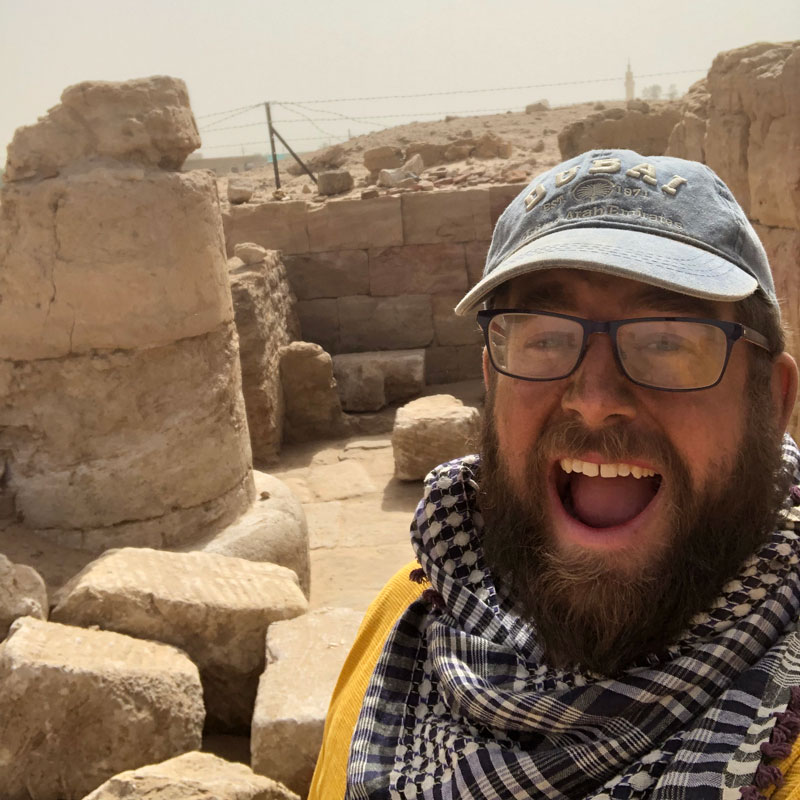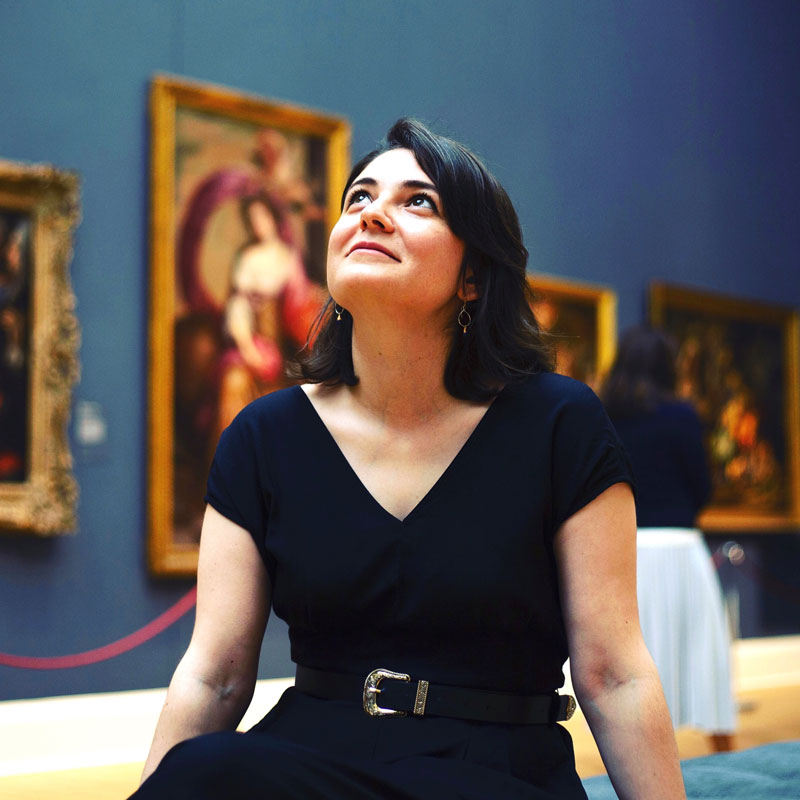The Deep Dig
What's Haute in Ancient Fashion?
Live Online
Thursdays, May. 2 - 23, 6:30 pm - 8:00 pm ET
$175 General | $125 Member
Register
Cultivate your curiosity about ancient history, exciting excavations, and cultural heritage connected to the Penn Museum's unparalleled collection and research. This Deep Dig course consists of four live virtual classes led by experts in their field. You’ll also have access to digital readings, online archival research, and videos. Recordings of the live class will be available if you miss a session. No archaeology or anthropology background required—just bring your love for lifelong learning!
To wear is human. For thousands of years, we have been expressing ourselves through the power of style. Step back into the fashion archives to explore adornment in the ancient world–– from bold prehistoric tattoos and regal Egyptian headdresses to voluminous Mesopotamian wool skirts and opulent Aegean jewelry. Discover how ancient clothing, fashion, and body art was more than just décor that draped the body—it was an expression of status, beauty, gender roles, and identity.
Wielding archaeological and art as historical evidence, unearth the craftsmanship and technologies that shaped fashion in prehistoric, Mesopotamian, Egyptian, Nubian, and Aegean cultures. Navigate the rich language of attire as shaped by people, their practices, preferences, and hierarchies. What we wear speaks volumes, and every thread weaves a story. Unravel it with us in this captivating four-week course.
Week 1: The Deep Origins of Fashion
What is fashion and how can you see” it in the archaeological record? In this class, look at the deep history of decorating the body with different materials and pigments, learn about how evidence of these was preserved over time, and consider how the concept of “fashion” can be applied to the prehistoric societies of Paleolithic and Neolithic Europe and the Middle East.
Week 2: Clothes and Status
Clothing is a powerful means of communication and tells us much about a person. In this week’s class, delve into ancient couture from the colorful embroidered robes of Mesopotamia to the flowing flounced skirts of the Aegean. Explore artistic sources and material traces of textiles, and how they were made and worn, as well as how textiles were used to express social status.
Week 3: Body Art and Identity
The body is a canvas and has been painted, tattooed, and scarred in myriad ways over human history. Look at the evidence for ancient body art through the material traces of pigments and cosmetics and tantalizing evidence of tattoos on human remains in Egypt and Nubia. Consider how these forms of body art expressed a sense of self and personhood.
Week 4: Hairstyling and Gender
Hair is one of the most changeable parts of the human body: It can be cut, pressed, curled, heated, braided,dyed. In the final class, explore the diversity of hairstyles—including multilayered Egyptian wigs, manicured Assyrian beards, and the wild Cretan curls—and explore how hair was used to signify concepts about a person’s journey through life.
Member Preview
April 25, 2024
7:00–7:45 pm
Members are invited to a free preview of this course. Join us for a sneak peek of the content, meet the instructor, and ask questions. Not a member? Join today.
About the Speakers

Carl Walsh, Ph.D.
Carl Walsh, Ph.D., is an archaeologist and Egyptologist specializing in the Bronze Age Mediterranean, Western Asia, and North Africa, with a current research focus on the material and visual traditions of ancient Nubian societies. He earned his B.A. in Egyptology at the University of Cambridge and his Ph.D. at the Institute of Archaeology at University College London.

Pınar Durgun, Ph.D.
Pınar Durgun, Ph.D., is an archaeologist trained in art history with a strong background in anthropology and museums. Her research focuses on ancient Anatolia and Western Asia, the history of death and burial, digital museums, and image and identity making. She currently works as a curator at the Vorderasiatisches Museum (Museum of Ancient Near East) in Berlin.

Carl Walsh, Ph.D.
Carl Walsh, Ph.D., is an archaeologist and Egyptologist specializing in the Bronze Age Mediterranean, Western Asia, and North Africa, with a current research focus on the material and visual traditions of ancient Nubian societies. He earned his B.A. in Egyptology at the University of Cambridge and his Ph.D. at the Institute of Archaeology at University College London.

Pınar Durgun, Ph.D.
Pınar Durgun, Ph.D., is an archaeologist trained in art history with a strong background in anthropology and museums. Her research focuses on ancient Anatolia and Western Asia, the history of death and burial, digital museums, and image and identity making. She currently works as a curator at the Vorderasiatisches Museum (Museum of Ancient Near East) in Berlin.
FAQs
Every session is recorded and sent via email to all registered participants. The recording will be available for 6 months following the program.



